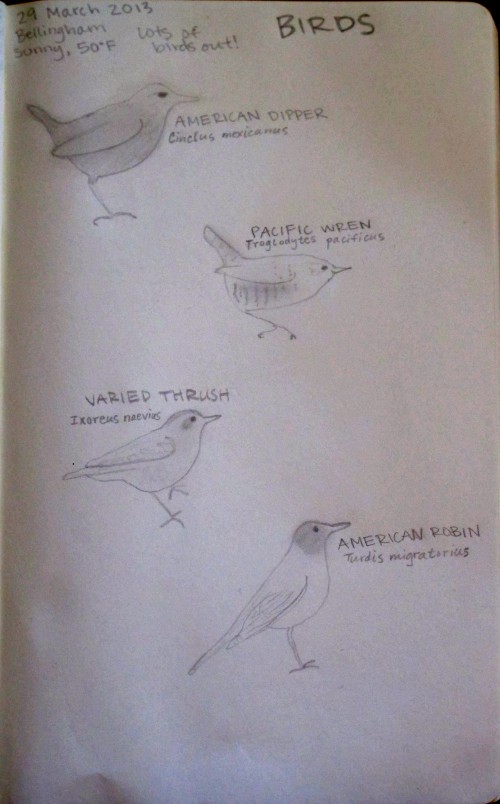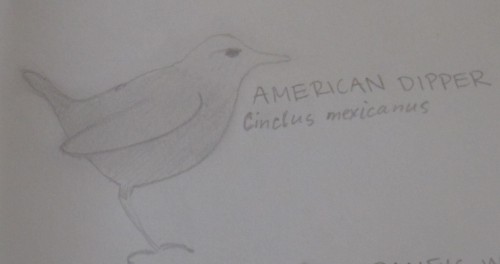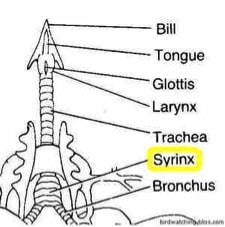The first birdsongs of spring at the Learning Center

While I have personally never beheaded a chicken, I’ve definitely heard the saying, “running around like a chicken with its head cut off,” but I have never heard anyone say anything about “squawking like a chicken with its head cut off.” Apparently this happens too. We can attribute this bizarre occurrence to a fine, bird-specific organ called the syrinx.
The syrinx has significance far beyond decapitated squawking chickens or I probably would not be writing a blog post about it. While some musical artists have outrageous vocal ranges and skills, their lack of the syrinx means that they will never quite achieve the complexity or even efficiency of a song bird. Humans have a simple larynx to vocalize while birds have a larynx and a syrinx which sits at the base of the trachea right atop the bird’s two lungs. Basically, it’s an extra arrangement of muscles and membranes that a bird can control closely. It will expand and contract to create whatever notes or sounds it needs to. When humans speak, we can utilize only about 20% of the air leaving our respiratory system to create sound; with their syrinxes, birds can use 100%.
During our Mountain School Training earlier this month, I was struck by the song of the American Dipper. I could not help but become mesmerized with its beautiful song as it bobbed up and down along the log boom. At that point, I had not heard a real bird song since last summer!
 Sketch of the American Dipper from Ryan Weisberg’s natural history journal
Sketch of the American Dipper from Ryan Weisberg’s natural history journal
Since that day, the forests around the Learning Center have been full of singing birds. I am keeping a running list of first bird songs of the spring on the Learning Center grounds. So far, I have observed the following first songs:
March 5, 2013: American Dipper
March 6, 2013: Pacific Wren
March 16, 2013: Varied Thrush
March 19, 2013: American Robin
I can’t wait to hear more from my winged friends—some of whom are returning from a long time away from home while others are just emerging from a lazy, cold winter. Welcome back to the North Cascades, Spring!
 Sketch of the Pacific Wren from Ryan Weisberg’s natural history journal
Sketch of the Pacific Wren from Ryan Weisberg’s natural history journal
I highly recommend this piece on the complexity of the Pacific Wren’s song. It slows down and dissects the entire song of the Pacific Wren, allowing us to hear all of the notes in its long song.
Leading photo: Bird sketches from Ryan Weisberg’s natural history journal Diagram from http://www.birdwatching-bliss.com/bird-song.html Cait McHugh is a graduate student in North Cascades Institute and Western Washington University’s M.Ed. program. She grew up in Nashville, TN and has spent time learning and teaching about ecology and conservation in Tennessee, Connecticut, New Mexico, and most recently southern California. Cait is an intern mentor and a stewardship curriculum assistant at the North Cascades Institute.


